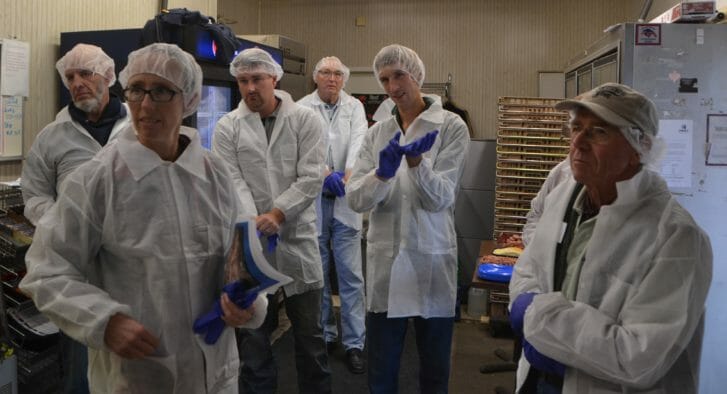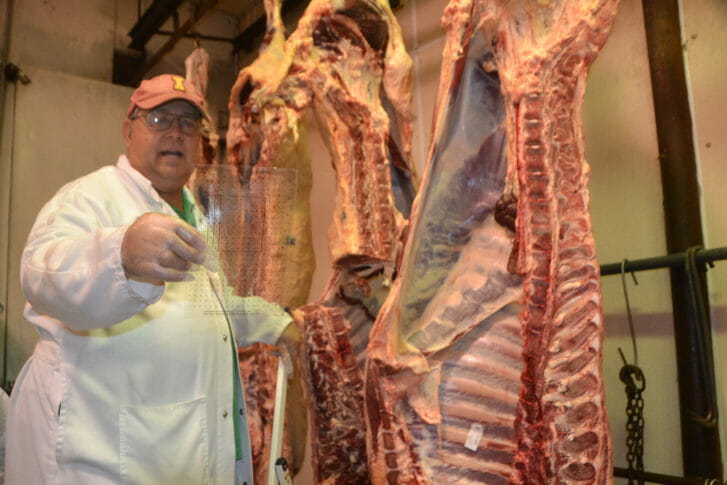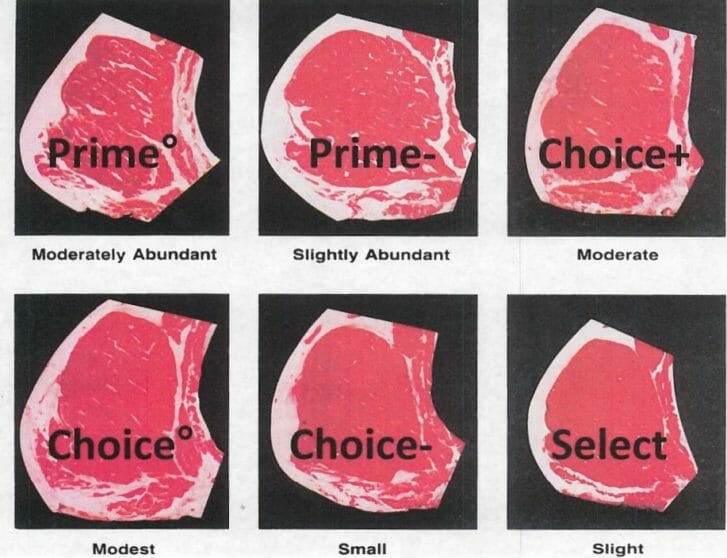Field Day Recap: Grading Grass-Finished Carcasses for Meat Quality
Over 30 farmers visited the Mingo Locker on October 15, for the second field day in a two part series. In September, the group visited Carney Family Farms to see grass-finished beef cattle that were ready for market. These cattle had been ultrasounded to determine carcass characteristics, which can be read about here. At the locker, we were able to get an up close and personal look at four of the animals we had seen a couple weeks before. The cattle were harvested three days before we arrived, and each was assigned a USDA beef quality grade. We were then able to compare the quality grade evaluation to the ultrasound data, to see how well they matched up.

Field day attendees get suited up to inspect grass-fed beef carcasses at the Mingo Locker in Mingo, IA.
Joe Sellers, ISU Extension Beef Specialist, explained that USDA quality grades are a prediction of beef palatability based on skeletal maturity, tenderness, and marbling (amount of intramuscular fat). Keep in mind that specific USDA quality grades do not exist for grass-finished meats, and the carcasses were evaluated using scorecards based on conventional grain-fed standards. Joe explained skeletal maturity and how animals older than 30 months of age have lower chances of scoring select, choice or prime quality grades. Of course, this matters if you are selling your grass-fed and/or grass-finished animals into markets where they are destined to be graded, but a USDA grade doesn’t matter much if you are direct marketing. Buyers of grass-fed meat are not usually making purchasing decisions based on quality grades.

Joe Sellers, ISU Extension Beef Specialist, explains beef quality grade evaluation.
The carcass evaluations consisted of measuring the size of the ribeye and amount of backfat, and matching the amount of marbling with the score cards pictured here.
We then compared those scores with the numbers generated from the ultrasound, to get an idea of how accurate the ultrasound is. The question at hand is – can farmers use ultrasound to better predict when grass-finished animals are ready to harvest?
The first four photos below show ribeyes from each of Bruce’s grass-finished cattle. The fifth photo is a ribeye from a grain-fed carcass, for comparison. The ultrasound scores and the USDA scores are provided, along with the USDA quality grade. Two heifers and two steers were harvested for this; the heifers were both graded as Choice – and the steers were graded as Select (which is a lower grade than choice). At the first field day we discussed how heifers keep fat on better than steers. The grain-fed carcass scored the highest, with a Choice +.
PFI would like to thank Alex Frangopol at the Mingo Locker for hosting us. We also thank the Iowa Natural Resources Conservation Service (NRCS) for funding this project and field day.

